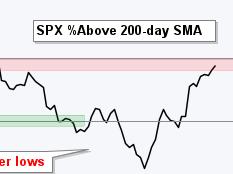At a time of great market uncertainty, investors are eagerly looking for leads and breadths as to what the SE markets may be suggesting about the future. Enter long-term breadth indicators; those derived from the activity of long-term and large investors.
Recently, such long-term breadth indicators have been at an all-time high, suggesting the market may have reached an inflection point. As such, long-term investors may have hit a crucial moment of truth.
In order to understand the implications of this moment of truth, it is important to have a deeper insight into what long-term breadth indicators are. Broadly speaking, breadth indicators measure the overall activity of the market using a combination of the number of advancing stocks or declining stocks compared to other securities over time. For longer-term and large investors, the breadth indicator measures how much aggregate trading activity the market has exhibited.
The recent highs that long-term breadth indicators have achieved suggest that many large investors may be absent in the market. This implies that the current volatility in the market may be a result of ‘noise’ trading rather than fundamental investing. This is not a good sign for the market, as it could be an indication that the current market momentum is not based on any sound long-term investment strategies.
Furthermore, if large investors are absent from the market, then it could suggest a build-up of volatility in the near future. Without institutional investors driving the market, retail investors will likely be exposed to more risk than usual. This is why this moment of truth is so significant; it could serve as a warning sign of the risks that lie ahead for those who are not taking the time to understand the significance of long-term breadth indicators.
With all this mind, what can investors do? To begin with, they should pay attention to long-term breadth indicators. As this moment of truth has already been identified, investors should use the insights gleaned from long-term breadth indicators to inform their strategies.
Secondly, investors should focus on fundamental investing strategies, such as value investing, rather than speculation. Ultimately, scenarios such as these are hard to predict, so long-term investors should focus on making investments based on sound fundamental analysis.
Overall, long-term and large investors have hit a crucial moment of truth, as the activity in the market suggests that large investors may be absent. As such, investors should use the information gathered from long-term breadth indicators and focus on fundamental investing strategies to minimize risk.






